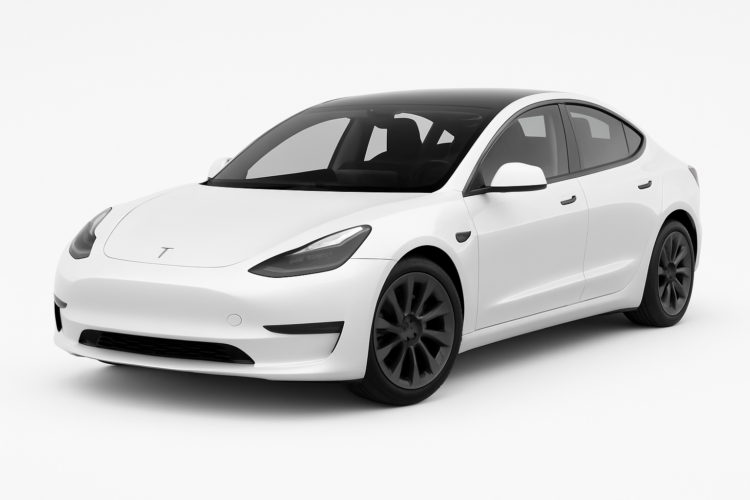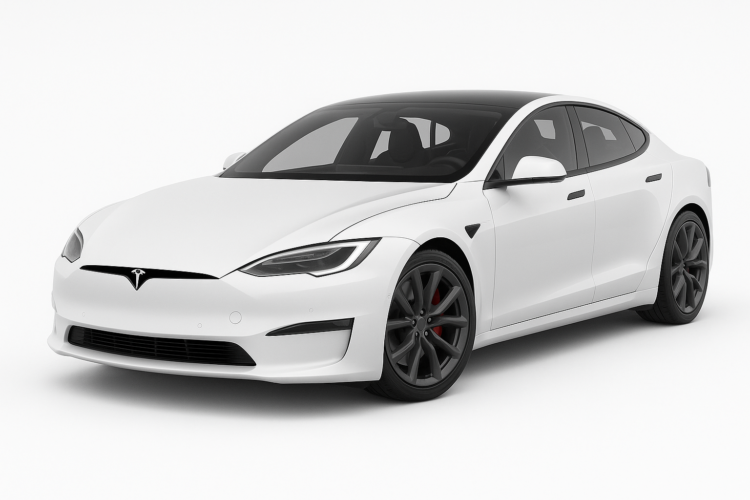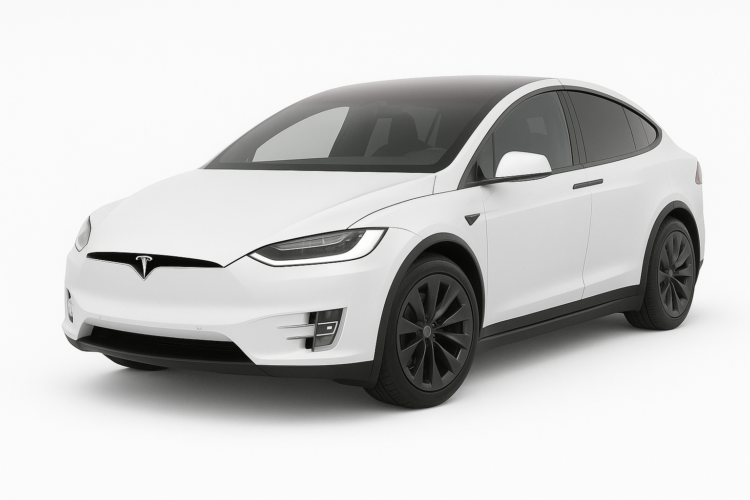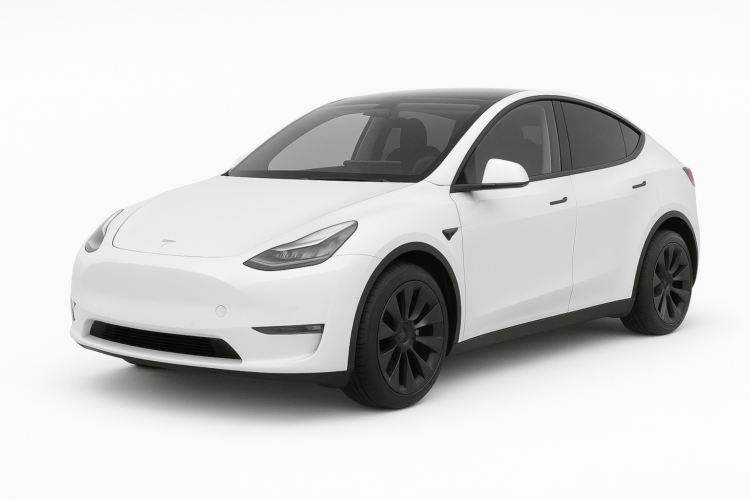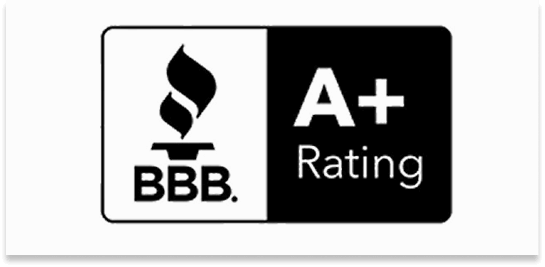Tesla Battery Replacement
In today’s automotive industry, the battery is the heart of electric vehicles, and Tesla leads in battery innovation. Tesla battery replacement is a crucial topic for owners looking to understand costs, lifespan, warranty details, and maintenance practices to get optimal performance. The guide below outlines the estimated costs in 2025, battery lifespan and degradation signs, warranty coverage and claims, a step-by-step replacement guide, essential maintenance tips, recycling and disposal processes, and the advantages of third-party replacement services.
Tesla’s battery system not only powers the vehicle but also influences range, acceleration, and overall performance. With increasing competition from companies like Rivian and other established brands offering upgrades, battery replacement becomes an essential long-term ownership consideration. Whether addressing battery degradation, changing warranty policies, or exploring third-party aftermarket solutions, Tesla owners need up-to-date information for informed decisions.
Select Model
Shop for Batteries
-
Sale!
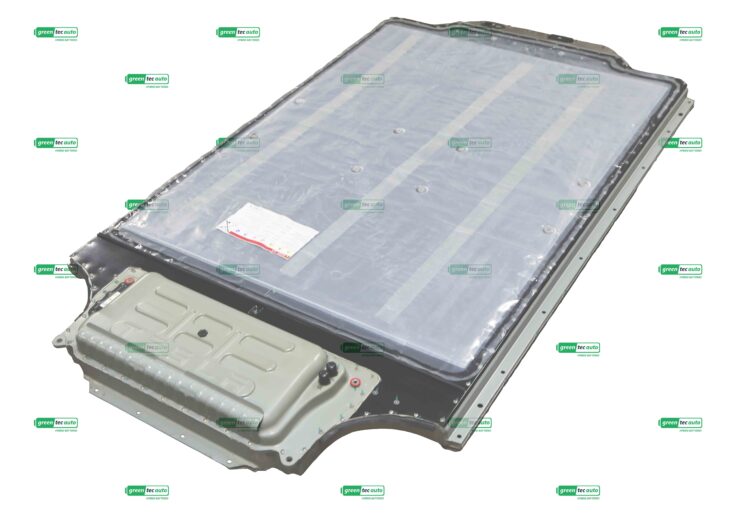
Tesla Model X EV Battery
$5,999.00 – $15,500.00 Select options This product has multiple variants. The options may be chosen on the product page -
Sale!

Tesla Model S EV Battery
$6,999.00 – $15,500.00 Select options This product has multiple variants. The options may be chosen on the product page -
Sale!
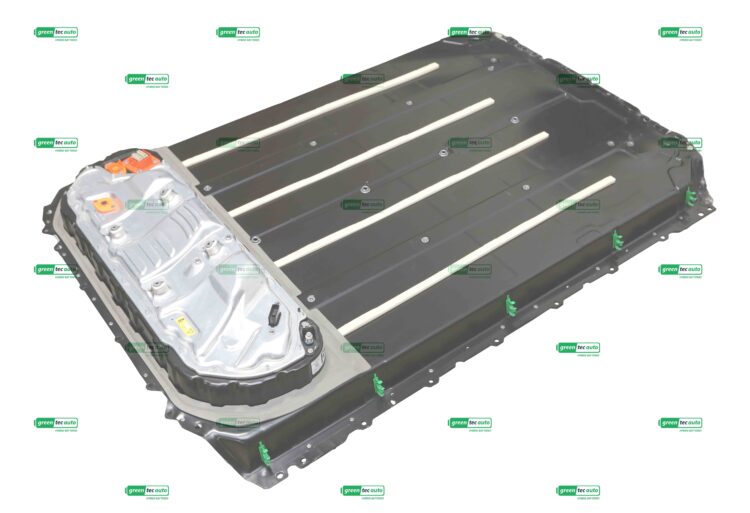
Tesla Model Y EV Battery
$8,999.00 – $14,500.00 Select options This product has multiple variants. The options may be chosen on the product page -
Sale!

Tesla Model 3 EV Battery
$8,999.00 – $14,500.00 Select options This product has multiple variants. The options may be chosen on the product page
CUSTOMER FEEDBACK
Trusted by Hybrid & EV Owners Nationwide
Found them through internet search. Requested mobile installation. They called back within 2 hours to set up an appointment. Turns out they had a shop near me, which saved me 50% on installation cost. Took about an hour.
Prompt, quick, professional service. So much cheaper than getting another car. I would highly recommend their service to anyone who needs a hybrid battery replacement.
Chris Walker
January 2, 2025
I was so grateful that my friend told me about this company. What I thought was going to be a $8,500.00 repair, as quoted to me by my regular auto shop, turned into a $2,400.00 repair. I will be forever grateful to Greentec EV & Hybrid Batteries. Thank you guys so much. Their customer service was excellent over the phone, and my experience with the technician that came to my home to do the repair was also excellent. I can’t thank you all enough. You really saved me!!
Lisa Tufano
January 10, 2025
The hybrid battery on my prius started dying and I managed to drove to the shop so I left it with them and told me they’ll finish it by tomorrow at 11am but they done it a lot earlier and faster than I expected. The car was running great again with the purchased of 12 month warranty remanufactured. I’m highly satisfied with the work they’ve done and I recommended them big time.
Ellrick Garcia
February 13, 2025
Need a Battery Replacement?
Why pay more at the dealership? At Greentec Auto, we offer affordable, accessible and reliable hybrid battery replacements at up to 50% less than dealership prices without compromising on quality. Get the best value with expert service, mobile installation, and a warranty you can trust.
CUSTOMER FEEDBACK
Trusted by Hybrid & EV Owners Nationwide

Shipping
The cost of shipping to you is included with your purchase. This offer is good for the entire continental United States. Add $200 for shipping to a residential address. Let Greentec Auto make it simple to return your core to us, ask about our reduced return shipping rates.

Core Charge
A refundable “core deposit” of $500.00 will be added to your order at checkout. Once we receive your old battery, we will refund the core deposit back to you minus the cost of return shipping. Cores must be returned within 45 days of purchase. This applies to shipping orders only. In all other circumstances, the core will be picked up at the time of service, no deposit required.
How do I return my old hybrid battery?
Once your new hybrid battery has arrived, put the core battery back into the same packaging your battery arrived in. As soon as we receive your core battery, we will refund the core deposit back to you. It’s that easy.
How Much Does Tesla Battery Replacement Cost in 2025?
Tesla battery replacement costs in 2025 generally range from $5,999 to $ 14,500 from Greentec Auto. Prices depend on model, battery pack size, installation complexity, labor rates at Tesla Service Centers versus third-party providers, and whether the battery is new, refurbished, or aftermarket.
Tesla Battery replacement pricing from Greentec auto
| Model & Battery Type | Price (USD) | Model & Battery Type | Price (USD) |
| 75 kWh Tesla Model S | $5,999 | 75 kWh Tesla Model X | $5,999 |
| 85 kWh Tesla Model S | $9,999 | 85 kWh Tesla Model X | $9,999 |
| 90 kWh Tesla Model S | $11,999 | 90 kWh Tesla Model X | $11,999 |
| 100 kWh Tesla Model S | $15,500 | 100 kWh Tesla Model X | $15,500 |
| Standard Range Tesla Model 3 | $8,999 | Standard Range Tesla Model Y | $8,999 |
| Long Range Tesla Model 3 | $9,999 | Long Range Tesla Model Y | $9,999 |
| Performance Tesla Model 3 | $14,500 | Performance Tesla Model Y | $14,500 |
New vs. Remanufactured Battery Packs
Tesla typically uses remanufactured battery packs for replacements, especially under warranty. These are rebuilt using salvaged cells from older packs. Contrary to popular belief, Tesla rarely installs brand-new battery packs—they may only do so if a customer pays out of pocket or if no remanufactured unit is available, according to reports and a Facebook post.
How Do Tesla Service Center Costs Compare to Third-Party Providers?
Tesla Service Centers charge a premium not just for parts, but also for labor billed hourly. Their average labor rate ranges from $175 to $200 per hour, and battery replacements can take anywhere from 3 to 13 hours, potentially adding $525 to over $2,600 in labor costs alone—on top of the battery price.
In contrast, third-party providers like Greentec Auto charge a flat installation fee, making costs more transparent and predictable. Many also offer mobile service and warranties comparable to Tesla’s, often at 30–50% lower overall cost. Regardless of where the work is done, it’s critical that replacement components meet Tesla’s performance and safety standards.
What Is the Typical Lifespan of a Tesla Battery?
Under normal driving conditions, a Tesla battery typically lasts between 8 to 10 years or approximately 150,000 to 200,000 miles. Over its lifecycle, a battery is designed to retain about 70% to 80% of its initial capacity.
How Long Do Tesla Batteries Last Under Normal Driving Conditions?
Tesla batteries maintain consistent performance for several years with only gradual capacity loss initially. Over time, factors such as chemical changes and charge-discharge cycles lead to a natural reduction in capacity. Tesla’s battery management and thermal systems help slow degradation, especially if owners avoid frequent full charging and deep discharges.
What Signs Indicate Tesla Battery Degradation?
Degradation is usually observed as a reduced driving range, slower acceleration, and decreased regenerative braking efficiency. Owners might notice longer charging times or receive software alerts if performance drops below set thresholds. Such changes warrant a professional inspection to decide if replacement is needed.
How Does Driving Style Affect Tesla Battery Lifespan?
Aggressive driving with rapid acceleration and hard braking can stress battery cells and accelerate degradation. In contrast, gentle driving with gradual acceleration and regenerative braking helps conserve energy and prolongs battery life. Environmental factors such as extreme temperatures also play a role, making consistent, moderate conditions beneficial.
What Does Tesla Battery Warranty Cover and How Does It Work?
Tesla warranties are designed to cover manufacturing defects and significant performance degradation. Typically, warranties cover up to 8 years or 100,000–150,000 miles and guarantee that the battery retains at least 70% of its capacity.
What Are the Standard Tesla Battery Warranty Terms?
Most Tesla models come with an 8-year warranty (or mileage equivalent) that ensures the battery retains a minimum of 70% capacity. The warranty covers manufacturing defects and certain performance issues but excludes damage from accidents, misuse, or unauthorized modifications. Detailed guidelines on proper charging and vehicle use are provided to maintain warranty validity.
How to Claim Tesla Battery Warranty for Replacement?
Owners must schedule a diagnostic assessment at an authorized Tesla Service Center. If tests show battery capacity below 70% due to a defect, the owner can file a warranty claim. The process involves evaluation by Tesla’s technical team and, if approved, repair or replacement is arranged with ongoing updates provided throughout the process.
Do Third-Party Battery Replacements Affect Tesla Warranty?
Using non-authorized repair services may void some parts of the original Tesla warranty if non-standard parts are used. However, many reputable third-party providers adhere strictly to Tesla protocols and offer comparable warranties. Owners should confirm any potential impacts on their warranty before proceeding with third-party services.
How to Replace a Tesla Battery: Step-by-Step Replacement Guide
Replacing a Tesla battery is a complex process that must be performed by professionals due to the high-voltage components and sophisticated systems involved.
What Are the Key Steps in Tesla Battery Removal and Installation?
- Diagnostic Assessment: Qualified technicians evaluate battery health to determine if replacement is necessary.
- Vehicle Securing: The vehicle is safely secured in a controlled environment with high-voltage systems deactivated.
- Battery Removal: The old battery is carefully disconnected and removed using specialized tools.
- Battery Evaluation: The removed battery is tested to decide if components can be refurbished or if a full replacement is needed.
- New Battery Installation: The new or reconditioned battery is installed, with careful reattachment of all electrical and cooling connections.
- System Calibration: The vehicle’s management software is updated to reflect the new battery parameters.
- Final Testing: Comprehensive tests are conducted to ensure the installed battery meets Tesla’s performance and safety standards.

Can Tesla Battery Replacement Be Done at Home or Requires Professional Service?
Due to the high-voltage risks and complex electronic integrations, Tesla battery replacement is not a do-it-yourself project. Professional service by authorized centers or qualified third-party providers is essential to ensure safety and maintain warranty coverage.
What Safety Precautions Are Necessary During Tesla Battery Replacement?
Technicians must adhere to strict safety protocols, including deactivating high-voltage circuits, using insulated gloves and proper grounding techniques, and following lockout-tagout procedures. Specialized service bays with emergency disconnects and fire suppression systems are used to minimize risks during the replacement process.
What Are the Best Tesla Battery Maintenance Tips to Extend Battery Life?
Proper maintenance can significantly extend the life of a Tesla battery and help maintain optimal vehicle performance.
How Often Should Tesla Batteries Be Checked and Serviced?
It is recommended that Tesla batteries be inspected at least once a year or every 12,000 to 15,000 miles. Regular diagnostic tests, checking voltage stability, thermal performance, and regenerative braking efficiency, help detect early signs of degradation and allow for timely interventions.
What Charging Practices Help Preserve Tesla Battery Health?
Maintaining the battery charge between 20% and 80% for regular use can help reduce stress on cells. Avoiding frequent supercharging and overcharging prevents excessive heat buildup. Scheduled charging during off-peak hours further assists in controlling battery temperature and prolonging battery life.
How Does Temperature Affect Tesla Battery Performance and Maintenance?
Extreme heat accelerates battery degradation by increasing cell temperatures, while very cold temperatures can temporarily reduce efficiency. Tesla’s thermal management system helps regulate battery temperature, but parking in shaded or temperature-controlled environments and using pre-conditioning features can further aid in preserving battery health.
How Does Tesla Battery Recycling and Disposal Work?
Tesla is committed to sustainability, and proper battery recycling and disposal are key to reducing environmental waste. The recycling process recovers valuable materials such as lithium, cobalt, and nickel, which can be reused in new battery production.
Tesla’s Battery Recycling vs. Greentec Recycling
Tesla’s recycling program is focused on responsibly dismantling end-of-life battery packs, recovering valuable raw materials like lithium, cobalt, and nickel, and sending them back into the supply chain. Tesla works with certified recycling partners to ensure materials are processed in an environmentally responsible way, contributing to a more circular battery economy.
Greentec Recycling, on the other hand, takes a more hands-on and modular approach—especially when it comes to Tesla battery packs. When a Tesla battery comes through our doors, our team first evaluates each individual component. Modules that still perform well are reused in professionally remanufactured battery packs, restoring function and value.
But for modules that don’t meet performance standards, the process doesn’t stop there. These components are passed on to Greentec Energy, where they’re given a second life—used in applications like home energy storage systems and EV conversions. This second-use strategy not only reduces waste but also supports the growing demand for sustainable energy solutions.
With 34 Greentec Recycling drop-off locations across the U.S., we make it easy for auto recyclers, repair shops, and individuals to recycle hybrid and EV batteries in a way that’s eco-conscious, efficient, and built for reuse—not just disposal.
Why Is Proper Tesla Battery Recycling Important for the Environment?
Proper recycling reduces the need for new raw materials, lowers greenhouse gas emissions, and prevents toxic chemicals from contaminating the environment. This not only supports a sustainable automotive industry but also helps conserve natural resources.
Why Choose a Third-Party Tesla Battery Replacement?
The Greentec Auto Advantage
Third-party providers like Greentec Auto offer key advantages over Tesla Service Centers—starting with lower cost. Our battery replacements are typically 30–50% less expensive, with flat-rate pricing and no hourly labor fees.
We also offer faster turnaround times, with 34 locations nationwide and a large in-stock battery inventory. Whether you’re upgrading to a 100 kWh Performance pack, sticking with a 75, 85, or 90 kWh, or even downgrading, we provide flexible options for Standard Range, Long Range, and Performance models—all backed by a 4-year / 48,000-mile warranty.
Final Thoughts
Tesla battery replacement involves a detailed process covering cost assessments, battery lifespan evaluation, warranty terms, professional replacement procedures, routine maintenance, and environmentally responsible recycling. By understanding these aspects, owners can make informed decisions to maximize vehicle performance and extend battery life. Staying proactive with maintenance and considering reliable third-party services are essential steps toward ensuring a sustainable and efficient electric vehicle experience.
Know Your Hybrid’s Battery Health Without Breaking the Bank
If you notice warning lights on your dashboard, don’t rush to the dealership for an expensive diagnostic report. Many local auto parts stores can scan your vehicle and provide error codes for free—just ask them to run a quick scan with a diagnostic tool.
Above, we’ve listed some of the most common hybrid error codes. Keep in mind that the check engine light must be onfor major issues to be detected. If your vehicle is experiencing hybrid battery failure, dealerships often charge thousands of dollars for a replacement—typically with a limited warranty.
At Greentec Auto, we offer a cost-effective alternative, providing high-quality hybrid battery replacements at a fraction of the price. Plus, we back our batteries with a comprehensive warranty to give you peace of mind.
Frequently Asked Questions
What are hybrid/EV error codes?
Hybrid and EV error codes are diagnostic trouble codes (DTCs) triggered by the vehicle’s onboard computer when it detects a problem with components like the hybrid battery, inverter, or high-voltage system. Common hybrid battery codes include P0A80 (Replace Hybrid Battery Pack) and P0A7F (Hybrid Battery Pack Deterioration). These codes help pinpoint issues in hybrid and electric vehicles and are essential in identifying when a hybrid battery replacement may be needed. We’ve dedicated a page where you can find different Error Codes, what they mean, what the causes are, and their symptoms.
How do I know if my hybrid battery needs replacement?
Signs you may need a hybrid battery replacement include decreased fuel efficiency, warning lights or hybrid error codes (like P0A80), reduced electric driving range, sluggish acceleration, and unusual fan noises. If you’re noticing these symptoms in your hybrid or EV, it’s best to schedule a high-voltage battery diagnostic with a trusted specialist like Greentec Auto.
Can I drive with a hybrid battery error code?
Driving with a hybrid battery error code like P0A80 or P0A7F can lead to reduced performance, lower fuel economy, and further damage to the vehicle’s electrical systems. While your hybrid or electric vehicle might still operate on the gasoline engine, it’s not recommended. A professional hybrid battery diagnostic can confirm if a battery replacement is necessary to restore full performance.
How much does it cost to replace a hybrid or EV battery?
The cost of a hybrid battery replacement or EV battery replacement varies depending on the make, model, and battery type. On average, hybrid battery replacements range from $1,500 to $4,000, while electric vehicle battery replacements can cost between $5,000 and $15,000 or more. Greentec Auto offers affordable pricing on remanufactured and new hybrid batteries with installation options and warranty coverage.
Does Greentec Auto offer diagnostics for hybrid error codes?
Yes! Greentec Auto provides expert hybrid battery diagnostics for vehicles showing warning lights or EV/hybrid error codes like P0A80, P0A7F, and others. Our certified technicians use advanced tools to pinpoint battery issues and recommend the best solution, whether it’s a hybrid battery repair or a full battery replacement. We offer mobile diagnostics and in-shop services at locations across the U.S.

